Friday: Sep 2, 2011
(Reykjavik)
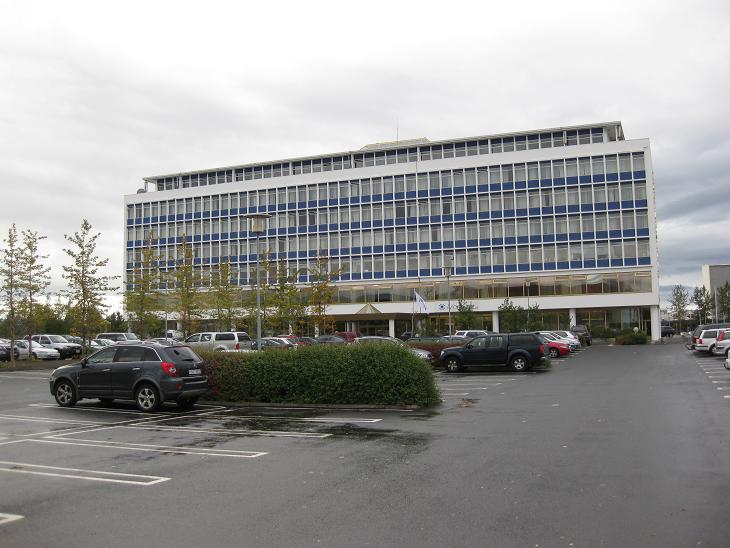
The first thing you learn about Iceland is that its only
international airport is so far away that you can
easily solve a Sunday New York Times cross word puzzle during the ride to your hotel
(especially if you are staying in Radisson
on the far end of the Reykjavik peninsula).
The Keflavik International
Airport is located about 50 km southwest of the capital, but tourists love Iceland
so dearly that they do not seem to mind
a little show of support for the local bus industry.
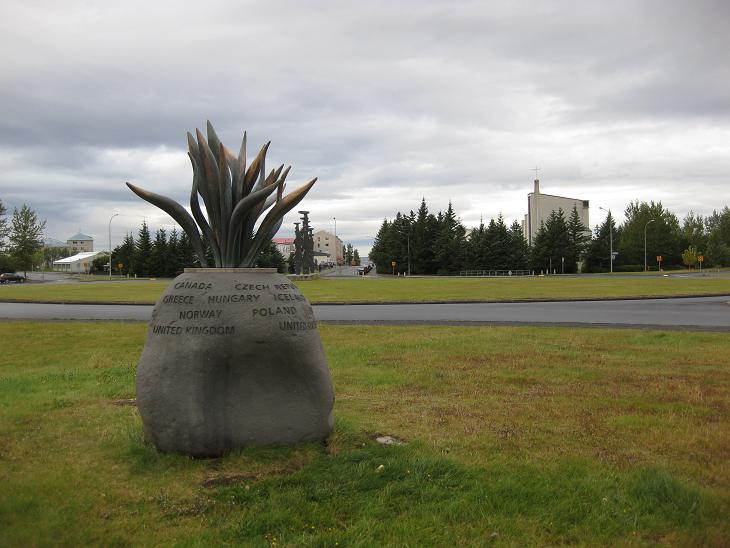
The second thing you learn about Iceland
is that clouds love it just as dearly as the tourists.
That of course poses a subtle problem because,
for most of recorded history, the relationships between tourists and clouds have been
... shall we say problematic?
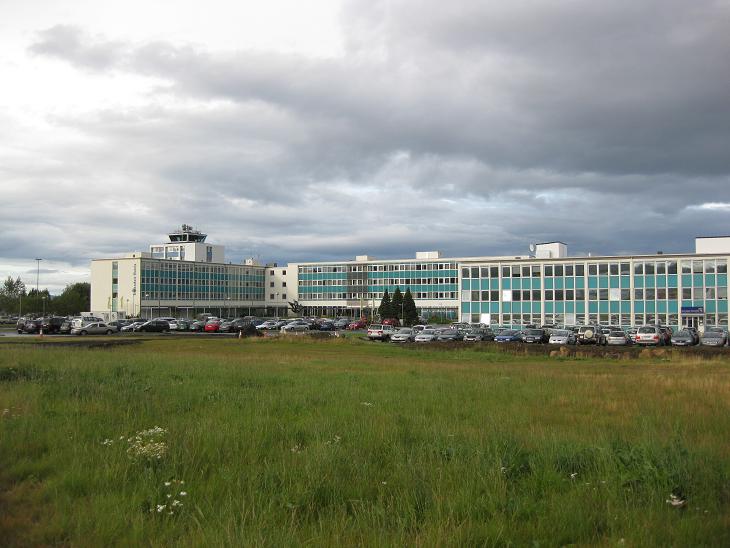
Interestingly, on the plane we ran into some old friends, so our first stop
was the Natura Hotel where they were staying.
The hotel (which for some reason reminded me of an old celluloid film making
factory FOMA in my hometown) was situated right next to the old airport,
just a short twenty minutes walk from the downtown.
This airport, whose control tower is partly obscured by the hotel,
now serves only selected domestic flights.
Reykjavikers take the quality of their air very seriously,
so the big commercial jets have to offload their
passengers three peninsulas down the road.
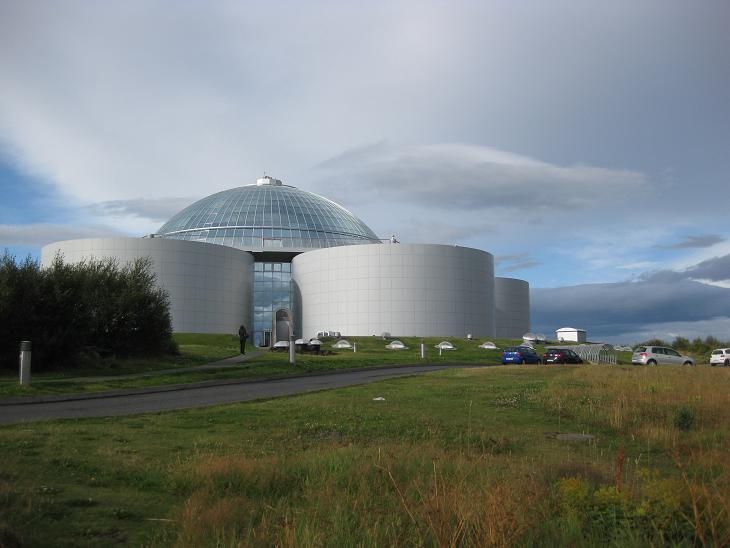
After we did not find our friends, we climbed up a small hill crowned
with a curious structure called Perlan. It was originally just a group
of hot water storage tanks,
but during the tenure of mayor David Oddsson a dome was added to it
and the whole place
was transformed into a shopping and cultural center with great views of the city.

Perlan is surrounded by a vast public park - although you should not really think of it
as a traditional European city park - it is more a sample of genuine northern
wilderness which your average middle class grizzly bear would love to call its home.
In the background you can spot the Hallgrimskirkja church peeking from
behind the trees. This church is an excellent orientation point and downtown
marker because it is easily visible from most places in Reykjavik.
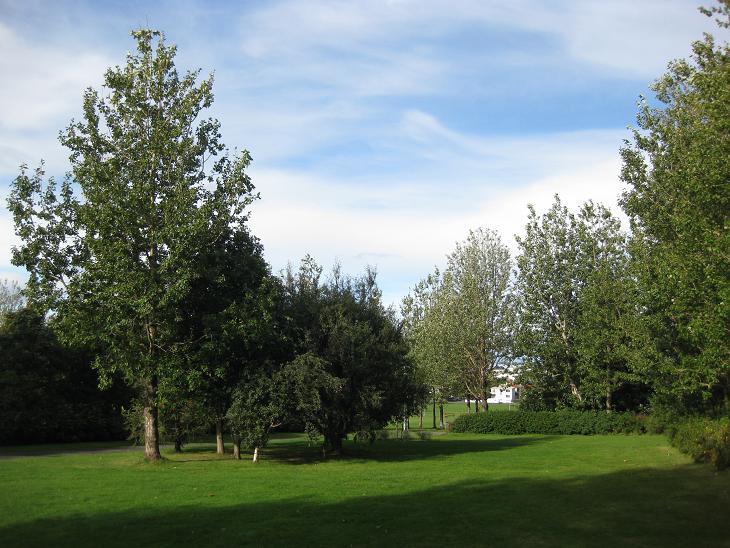
Soon we discovered a more conventional public park, when we took a quiet
northbound street with a name so long that
there may have been an intriguing short story encoded in it.
Here we took a lunch break
and ate sandwiches that we bought on our way from Perlan.
Food prices in Iceland are notoriously high and their
nominal value has been further magnified
by the recent crash of Icelandic Krona. Shopping at a grocery store thus makes
you feel a little bit like you are buying a used car.

Just a few blocks north from the park we ran into Hateigskirkja, which
instantaneously became my favorite Icelandic church -
mostly likely due to the fact that
its resident gods possessed the powers to part the morning clouds.
And in Iceland such powers are nothing to scoff at.

At this moment we consulted the map and realized that we had just walked
across half of Reykjavik. Moving around being so easy,
we decided to traverse it completely and visit the botanical gardens
on the other side of the city (relative to our hotel).
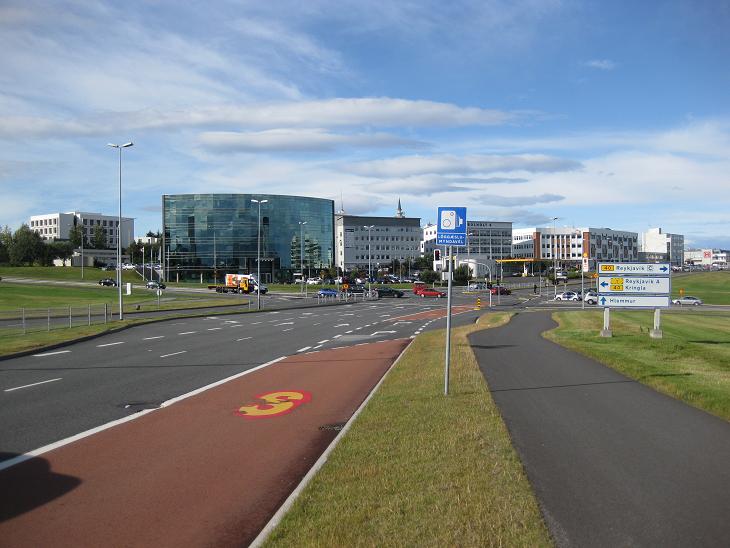
To get there we continued northeast past a small business district...

...and then cut across an adjacent residential area.
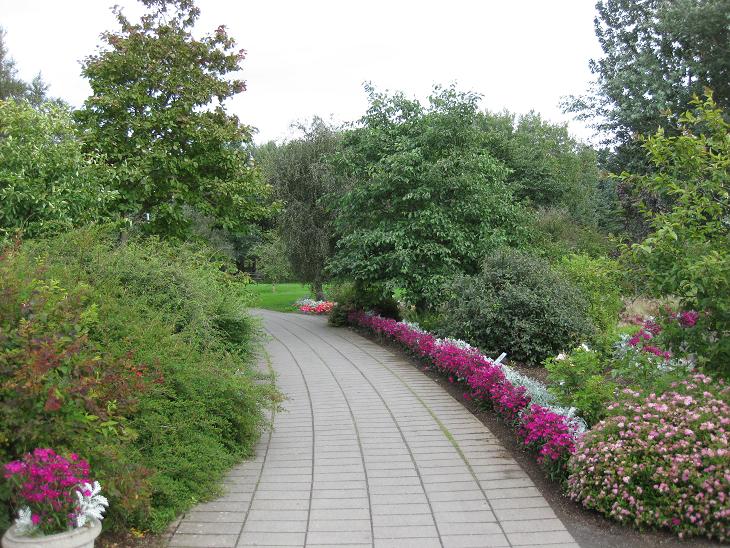
As you might imagine, at this latitude a botanical garden was bound to be modest...

...but we did find many tastefully arranged areas where one could rest, relax and
maybe even meditate.
The good botanical gardeners
of Reykjavik did not forget to include a discreet pond
to facilitate your pondering.
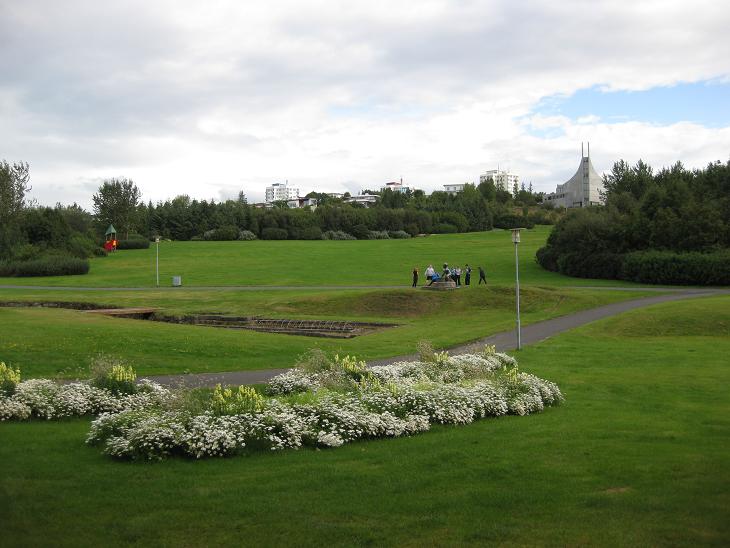
The botanical garden is a part of the Laugardarur recreation
complex that also houses one of Reykjavik's
soccer stadiums.
That strange alien transmission tower on the right is in reality the Askirkja church.
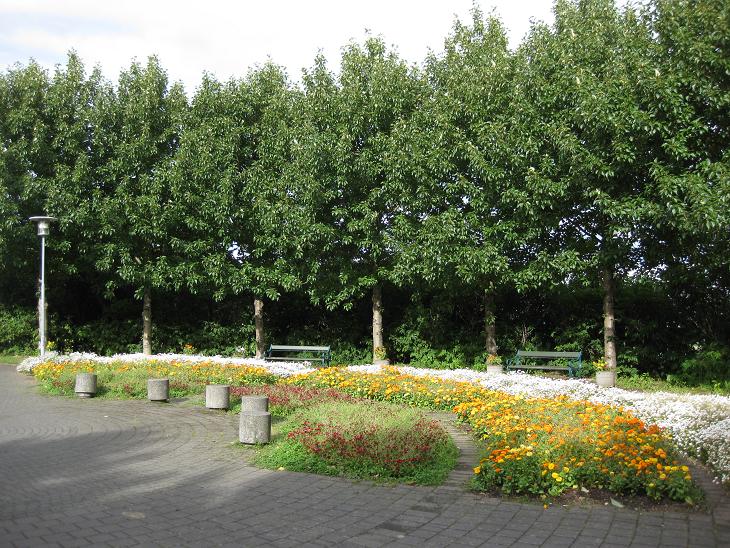
It is not widely known that Iceland has the largest number of benches per capita
in the world. No matter where you go, there they are.
Maybe that's why local people appear so well rested.
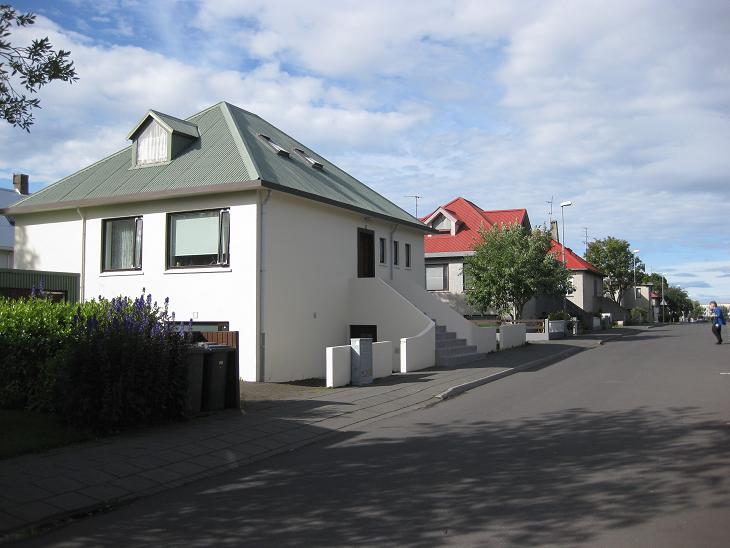
After we exited the recreation area we crossed
a small suburban district...
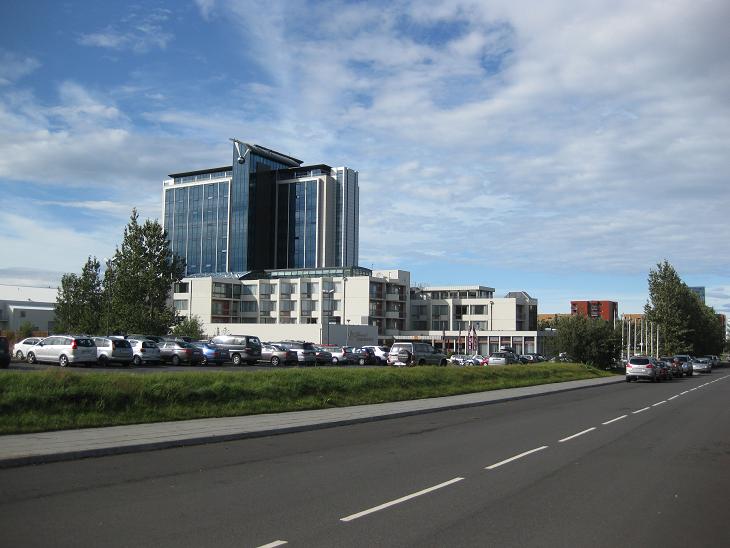
...and emerged next to the Grand Hotel where we took
Kringlumyrarbraut road to the ocean.

Reykjavik is a bike friendly city. Bike trails are virtually everywhere and despite
the cold climate a number of people takes advantage of
this natural mode of transportation.

But like anywhere else, an even larger number of people relies
on more unnatural modes of transportation, such as combustion engine.
(the building in the photo shows that there is more to
Icelandic economy than just fishing and wool processing)
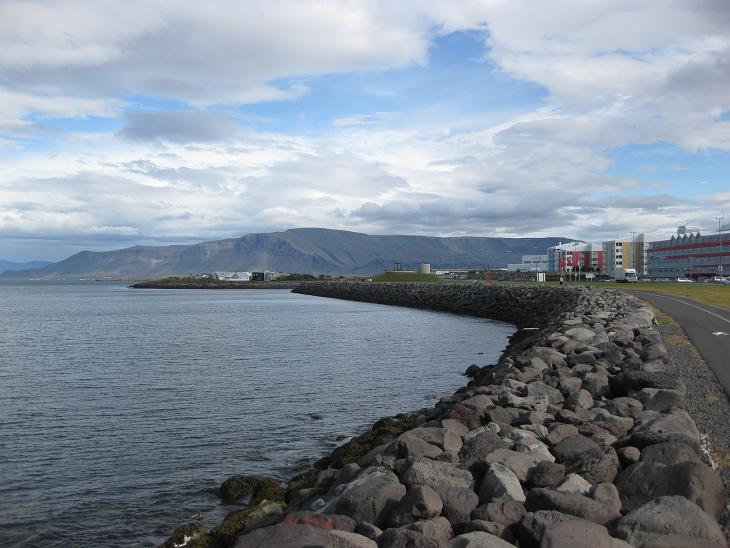
Finally we reached the northern shore of the Reykjavik peninsula.
This is the east view, away from the city,...

...and this is the view to the west, towards the city, alongside a walkway
dotted by little sculptures.
The Hallgrimskirkja church on the left shows that we are
slowly nearing the downtown area.
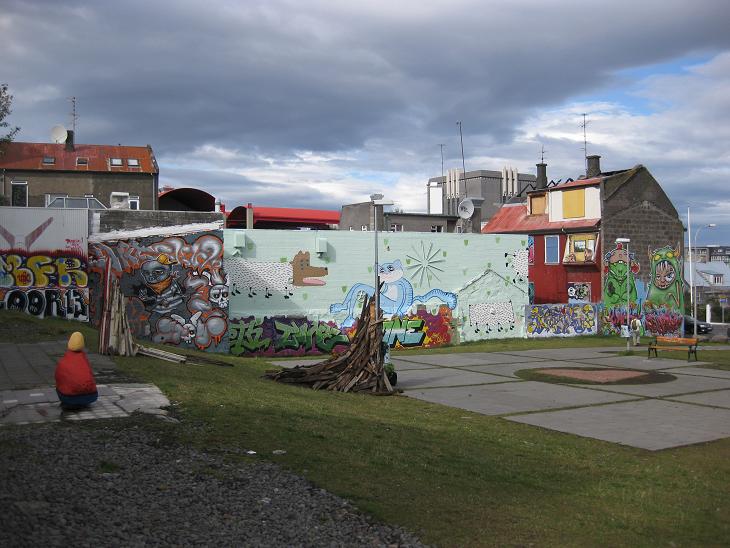
After about half a mile we left the ocean to its own devices and
cut through quaint backyards adorned with generous
graffiti
to the heart of the city.

It was Friday afternoon so the city's heart
was palpitating with preparations for the weekend.
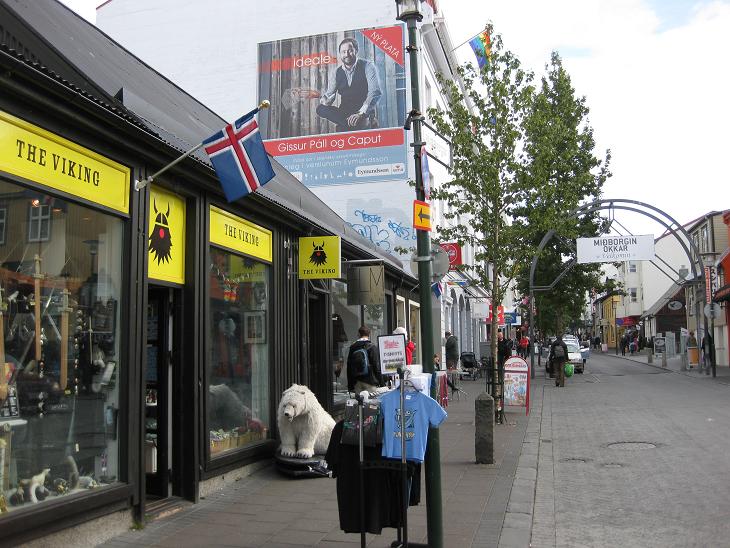
Soon we reached Laugavegur, a long but narrow street that forms a backbone of Reykjavik
and features many small hotels and boutiques.

Laugavegur eventually ends at a T-intersection with Laekjargata.
The glass and steel building in the background is
the brand new congressional center.
The complex designed by Henning Larsens Tegnestue was
opened in May 2011 and is part of a larger plan
for modernization of the Reykjavik harbor.
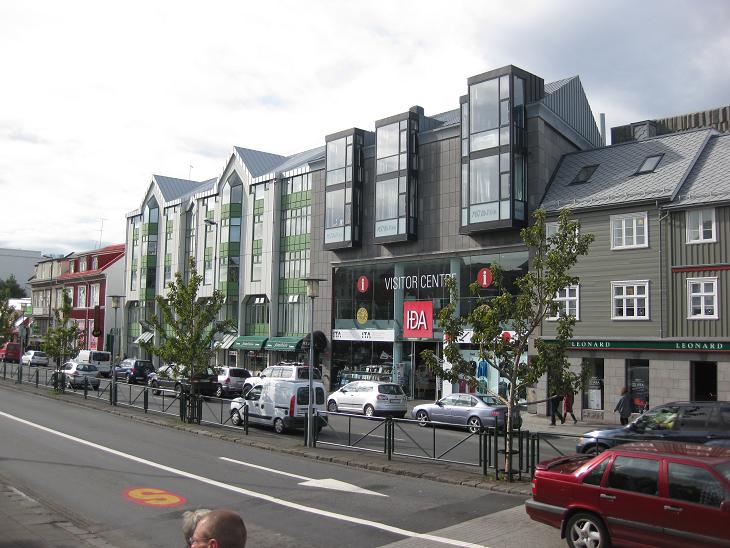
When you turn around and look in the other direction, you will find
that Laekjargata is a modern street with the usual mixture of hotels, shops and
business buildings.

As we strolled through the area we ran into numerous
small sculptures...

...some of which paid tribute to this nation's Viking heritage.
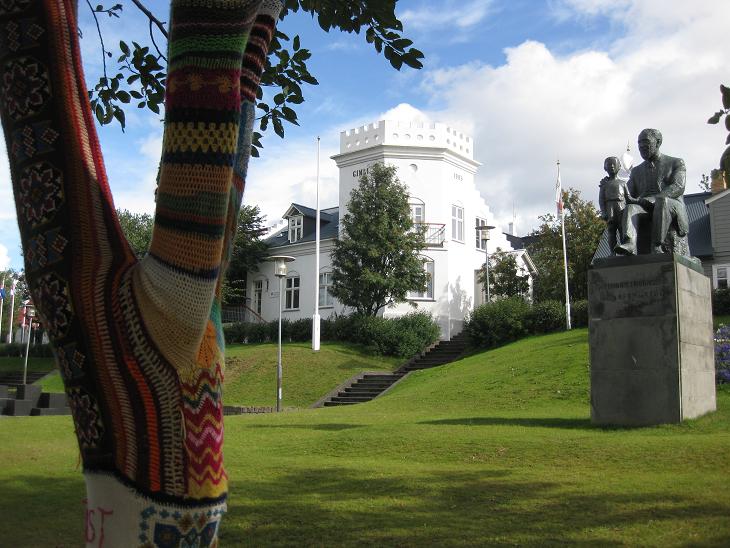
This part of Reykjavik (and Iceland in general) does not have many trees,
which may explain why this specimen got pampered
to its own knitwear.
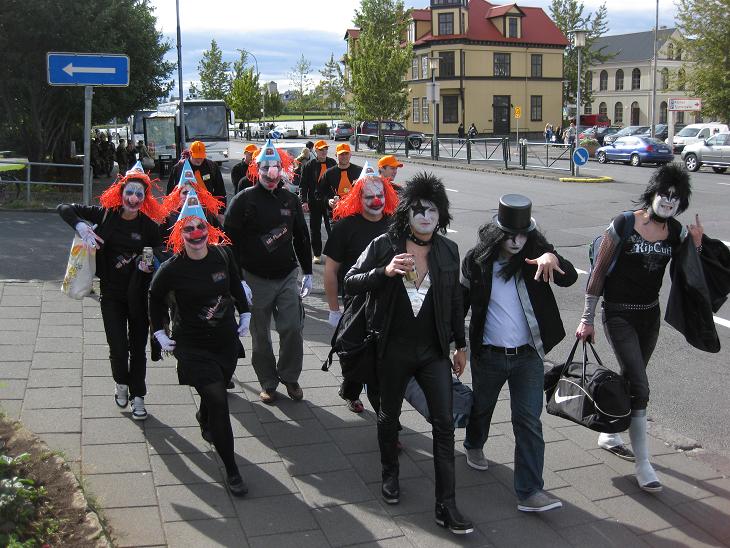
We also encountered several groups of young people in funny looking costumes.
At first we thought this was some kind of celebration of the new school year,
but upon asking we learned that they were all part of a large treasure hunt whose
initial orientation just concluded several blocks away.
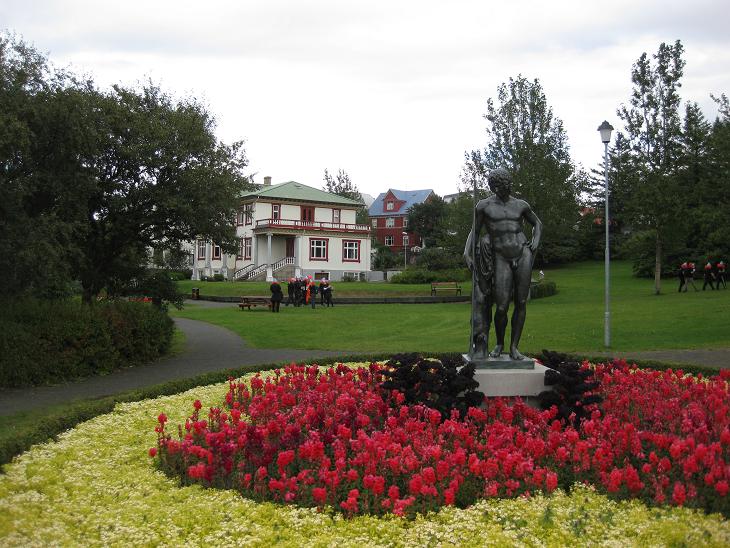
From that point on we saw many teams roaming the downtown area, hunting for hidden
treasures and slapping their team badges on unsuspecting pedestrians.

Apparently lots of points in this treasure hunt were earned by taking silly photos
around the city, which in one instance involved posing in
shallow waters
of Lake Tjoernin.
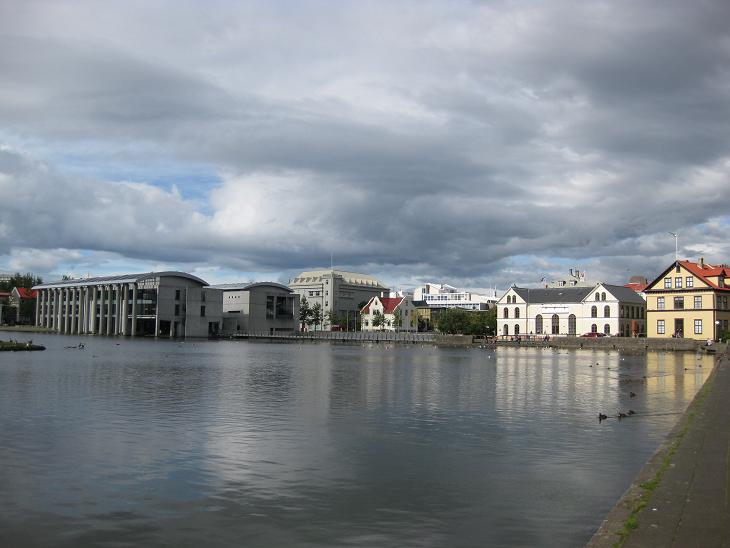
Lake Tjoernin marks the center of Reykjavik. The gray building on the left is the city hall...
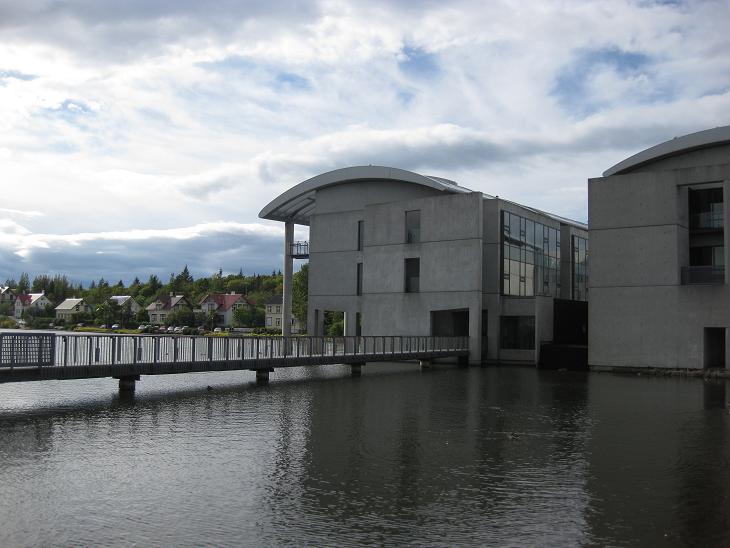
...which literally perches on its western shore - well above water - fiscally speaking
(not an easy task after the devastating credit crisis).
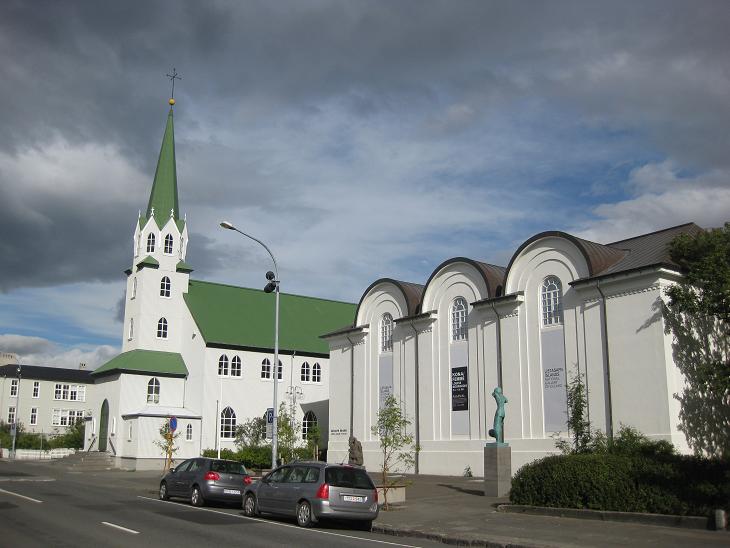
If you pan a bit to the right from the previous spot, you'll see
the national gallery (next to the Frikirkjan church).
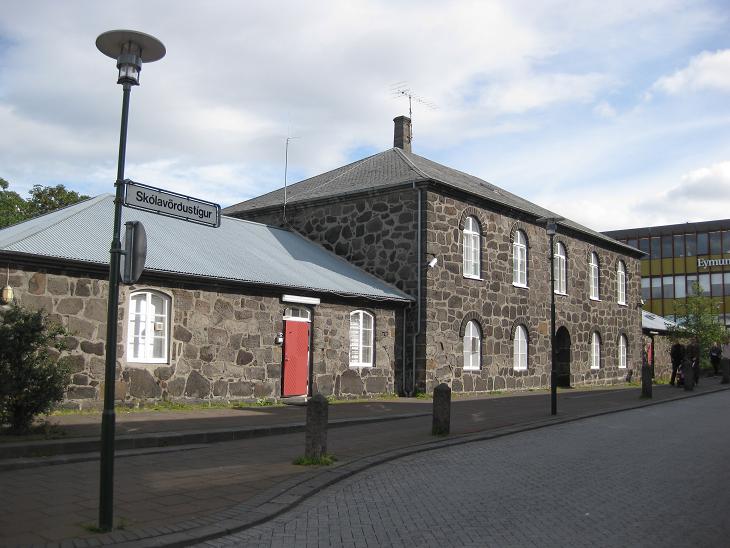
A few blocks east from the gallery lies Hegningarhusid ("Penalty house")
- the oldest prison in the country.
These days, the facility is mainly
used as an entry point into the Icelandic penal system,
although - according to our guide -
some prisoners still serve shorter sentences here.
So if you want to see the inside of this picturesque building
all you have to do is go on a shoplifting spree
at a nearby bookstore.

Hallgrimskirkja church, the landmark seen from most places in Reykjavik
was getting closer and closer...
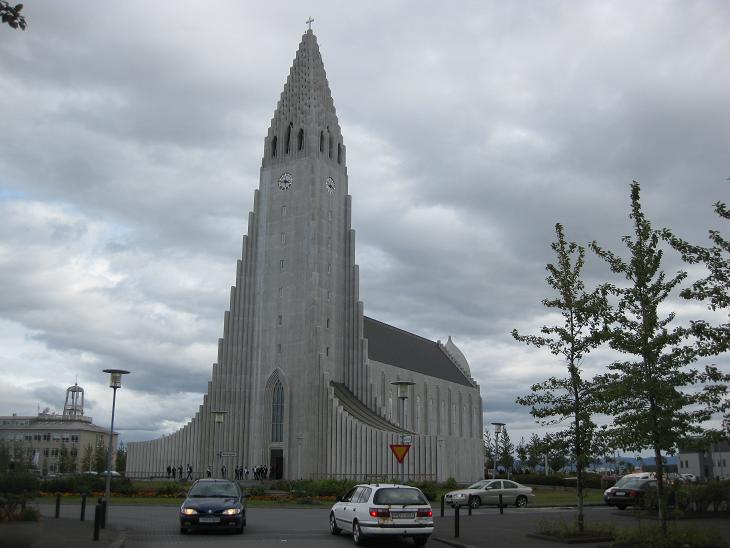
...and soon we were standing right in front of it. At 75 m (244 ft) it is the largest
church in Iceland. Its shape, conceived by the main architect Gudjon Samuelsson in 1937,
was inspired by the basalt lava flows so typical for the island's landscape.
The church houses a large pipe organ by the German organ builder Johannes Klais of Bonn.
You can see it at the beginning of the
church section
as well as the statue of explorer Leif Eriksson (970-1020) by
Alexander Stirling Calder
which actually predates the construction of the church.
The statue was a gift from the United States in honor of
the 1930 Althingi Festival,
commemorating the 1000th anniversary of Iceland's parliament at Thingvellir in 930 AD.
(Thingvellir, about 40 miles northeast from Reykjavik,
was our first destination the next day)

From the church we went straight back to our hotel,
taking shortcuts through less touristy areas...
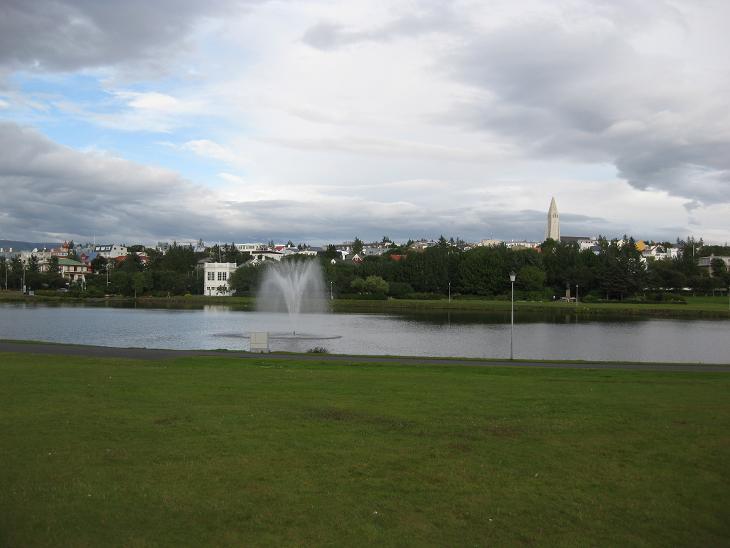
...and finally skirting Lake Tjoernin for one more time.
Next ---
Index






































